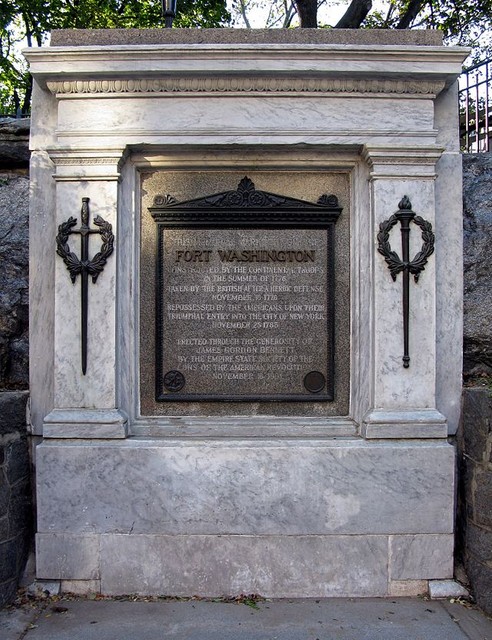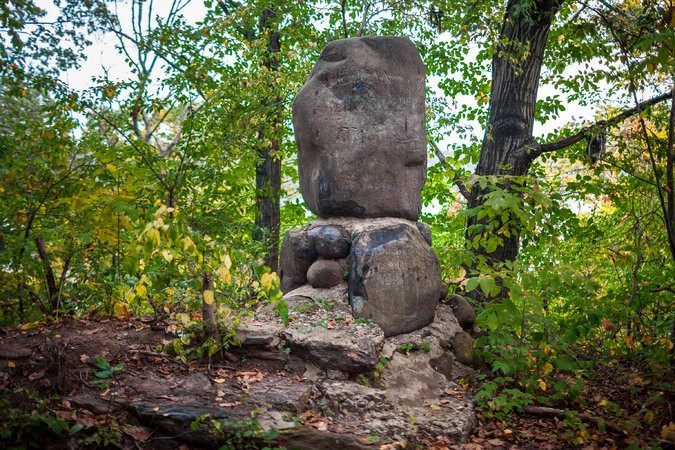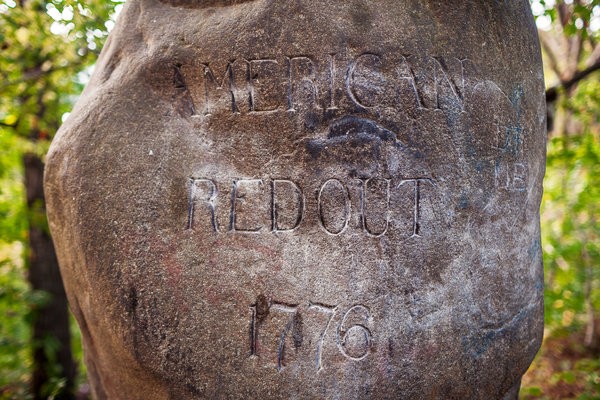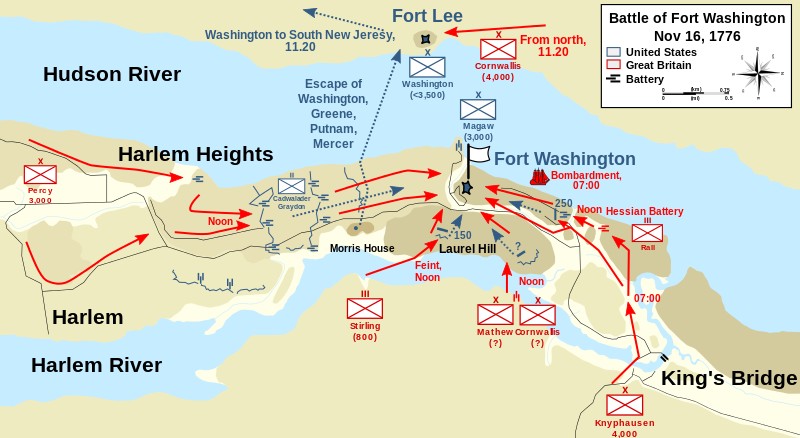Battle of Fort Washington
Introduction
Text-to-speech Audio
Images
Tablet commemorating the location of Fort Washington

Stone marker of the redoubt located near Fort Washington

Close-up of the stone marker

Battle of Fort Washington battle map

Backstory and Context
Text-to-speech Audio
Fort Washington was built in 1776 to prevent the British from going up the Hudson River by using artillery batteries. By using the fort and its defenses, the Americans were able to hold off many attacks from the British. As a result, Colonel Robert Magaw, the commander of the fort, became overconfident in the fort's defensive capabilities. He boasted that the fort could withhold a siege until end of December. However, he did not expect a defector in his army. William Demont defected from the United States to the British on November 2nd. He gave all of the details on the fort to Brigadier General Hugh Percy, who passed the information on to General William Howe. General William Howe is the one who defeated General George Washington only a few days earlier in the Battle of White Plains.
Washington had actually considered abandoning the fort, but Nathaniel Greene persuaded him that the fort could be defended. Nathaniel Greene thought that it was vital to protect the fort because the fort helped keep communications across the Hudson River open and it helped dissuade the British from trying to take New Jersey. Nathaniel Greene eventually persuaded Washington to not give up on the fort. However, they did not know that Howe was planning an attack on the fort. The plan was to attack the fort from 3 sides, while a separate 4th force feigned an attack. But before the attack commended, Howe sent a British officer to the fort under a flag of truce. The soldier delivered a message that said if the fort did not surrender, everyone in the fort would be killed. Magaw refused to surrender the fort and said that the Americans would fight until the end.
The British and Hessian troops began moving towards the fort before dawn on November 16th. At 7 A.M., Hessian troops began firing upon the American battery on Laurel Hill, and the British Frigate Pearl began firing on the American entrenchments surrounding the fort. At the same time, Percy and his artillery began firing at the fort itself. The Americans responded by shelling the British and Hessian troops who had been ferried across the river. As Percy began to march with his troops that totaled thousands of men, he tried to get the American forces to retreat into the fort. The nearby hills served to the Americans' advantage, as the British had to trek up the steep slopes. However, the British forces overwhelmed the Americans soldiers and forced them to retreat to the fort while Washington and other important officials like Green, Isaiah Putnam and Hugh Mercer retreated to nearby Fort Lee.
It took the British and Hessian forces almost no time to silence the battery in Fort Washington and to take the American redoubt at the top of the hill. The British began to slowly surround the fort and once again sent an officer under a flag of truce to request that the Americans surrender the fort. Magaw was given a half hour to decide. Magdaw made the decision to surrender the fort at 3:00 PM and by 4:00 PM the British flag was flying above Fort Washington.
By the end of the battle, the British and Hessians had suffered 84 casualties and 374 wounded, while the Americans suffered 59 casualties, and 96 wounded. However, a staggering 2,838 soldiers were captured as prisoners of war. Only 800 of these captured soldiers would survive long enough to be freed. The Americans soon abandoned Fort Lee, 3 days after the battle and Washington and his forces were chased as far as Brunswick, New Jersey by the British forces. But a month later, Washington made his now-famous crossing of the Delaware River, defeating the Hessian garrison at Trenton.
The site of Fort Washington lies in Bennett Park, where the location of its walls are demarcated by stones.
Cite This Entry
Raymond Wong and Colton Jeffries. "Battle of Fort Washington." Clio: Your Guide to History. November 13, 2015. Accessed March 20, 2025. https://theclio.com/entry/19705

